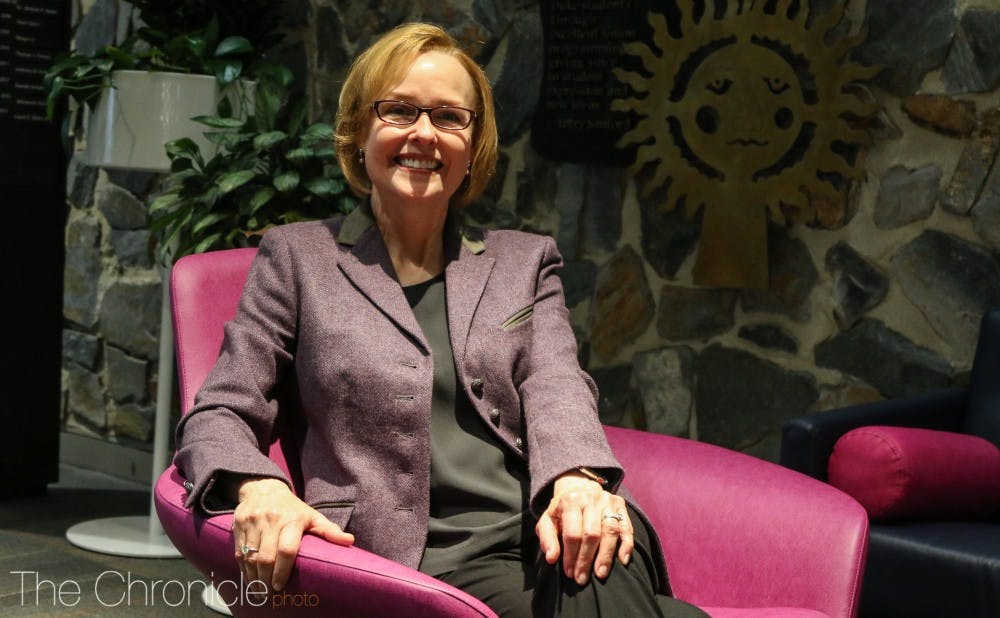Duke researchers have discovered that autism spectrum disorder could be detected and treated faster through innovations in machine learning.
Geraldine Dawson, director of the Duke Center for Autism and Brain Development, and Guillermo Sapiro, James B. Duke professor of electrical and computer engineering, have collaborated on a project to develop an app that captures toddlers’ responses to on-screen stimuli and analyzes the information for potential early signs of anxiety or autism spectrum disorder.
“We are unique in our approach, and to the best of our knowledge the first to do so,” Sapiro wrote in an email. “We have also collected the largest data, and we have also proved for the first time a number of concepts, from feasibility to new potential biomarkers.”
Although Dawson and Sapiro come from disparate fields of academia, their teams united to create a set of movies that elicit indicative responses such as facial expression and attention. Children can be shown the movies on devices like a tablet or phone, and the camera in the device tracks the child’s gaze and facial movements. Data from the devices is then analyzed and run through a set of algorithms developed by the team to estimate and quantify where the child is looking in order to assess the possible diagnosis of ASD.
In a video with Amazon Web Services, Dawson explains how the app can screen for ASD between 18 to 24 months of age, allowing for earlier detection and intervention, which can increase a child’s IQ by 17 points.
In 2015, an early, free version of the app—Autism & Beyond—was released for iOS-compatible devices. At the time, it wasn’t intended to be a diagnostic tool; rather, the researchers sought to check the reliability of facial expression video analysis and app-based questionnaires for screening for ASD and other development disorders.
“We are developing scalable methods of observing and measuring behavior automatically that can be delivered on common devices,” Dawson wrote in an email.
Dawson’s prior research centered on early detection and treatment of autism spectrum disorder through intervention on the developing brain. In the process, she demonstrated that symptoms of ASD could be screened for before an infant’s first birthday. Her laboratory studied differences in infantile brain activity associated with ASD and developed electrophysiological biomarkers that predict the severity of the disorder’s symptoms over time.
Along with Sally Rogers, professor of psychiatry and behavioral sciences at the University of California, Dawson used the information gleaned from her research to develop and validate the Early Start Denver Model, the first comprehensive behavioral therapy regimen for toddlers diagnosed with ASD.
In an article for JAMA Pediatrics, Dawson and Sapiro explained that typical screening for ASD has traditionally relied on reports from parents—at pediatric well-child visits, caregivers complete questionnaires based on the Diagnostic and Statistical Manual of Mental Disorders about their toddlers’ behavior. If responses indicate a certain number of symptoms, children are referred to a clinician for diagnostic assessment.
The researchers noted that these traditional reporting and observing methods are plagued by subjectivity—more subtle signs of ASD can be missed due to the lack of proper means to objectively evaluate them.
“Current methods of screening rely on parent report and are not as accurate as we would like them to be,” Dawson wrote. “Some parents have difficulty reading or understanding the questionnaire.”
Sapiro has spent most of his life working with computers and machine learning. His research interests include, but are not limited to, theory and applications in computer vision, computer graphics, medical imaging, image analysis and machine learning.
The collaboration between Dawson and Sapiro could potentially change the course of ASD screening. The two researchers projected that in the future, their research will become more accessible for use in common and clinical settings.
“We plan to validate and deploy some of our apps. This is one of the goals of our large clinical studies ongoing now,” Sapiro wrote.
Currently, the app is being incorporated into clinical trials for novel ASD treatments. Funding from the National Institutes of Health is also allowing for thousands of 18-to-24-month-old toddlers seen in Duke clinics to engage with the app.
Get The Chronicle straight to your inbox
Signup for our weekly newsletter. Cancel at any time.

